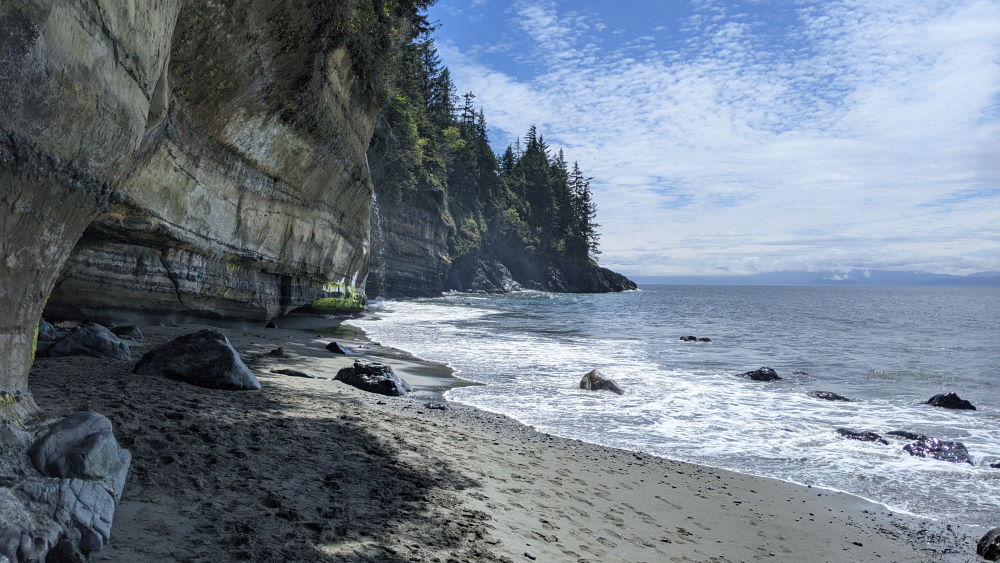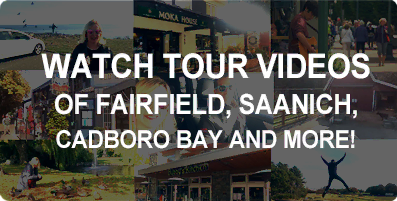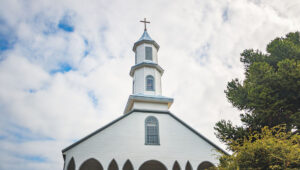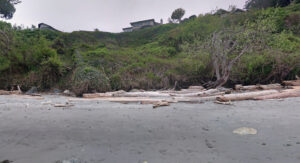Victoria is the Capital city of British Columbia, located on the picturesque Vancouver Island. Named after Queen Victoria, this rather small city is known for its British colonial past, abundance of gardens and natural beauty, making it a top tourist destination that sees roughly 4 million visitors per year.
There are about 400,000 people living in the Greater Victoria area of 2,441 square kilometres, making it the seventh most densely populated city in the country. The land covered by Greater Victoria is divided up into 13 municipalities, which govern and police themselves.
In this article, we’re going to tell you everything you need to know if you plan on moving to Victoria, including where the city is located plus information about the land, climate, history, things to do, and future of the city.
Location of Victoria

The city of Victoria is located on the southernmost tip of Vancouver Island, a 32,100 square kilometre island just off the west coast of mainland British Columbia. Vancouver Island is about the same size as Taiwan, and larger than Connecticut, Vermont, New Hampshire, Rhode Island and Massachusetts. The bottom part of the island that Victoria occupies actually dips below the 49th parallel, placing it below the mainland border between Canada and the United States.
While the northern areas of Vancouver Island are more remote, occupied by vast wilderness, fishing towns and Provincial parks, the southern tip is bustling. Victoria is an economic hub with plenty of job opportunities, industries and company headquarters, but it’s also an ideal home base for exploring the Pacific Northwest.
Vancouver Island’s largest airport is located in Victoria, plus there is an extensive network of ferries to take you to nearby cities. The BC Ferries ferry network can take you to Nanaimo, the second largest city on Vancouver Island, or one of the nearby and very beautiful Gulf Islands. But the most popular destination is Vancouver, the booming west coast metropolis located about 1.5 hours north of Victoria by ferry. You can even travel to the United States by ferry, given Victoria’s close proximity. From the heart of downtown, you can hop a ride to nearby Seattle or Port Angeles.
The Geography & Land

Being surrounded by ocean, downtown Victoria is located right at sea level, while the Greater Victoria area is made up of rolling lowlands which rise to a maximum height of about 300 metres above sea level. In some coastal areas you’ll find cliffs, spits and lagoons – evidence of old glacial activity where the land has risen 90 metres above sea level.
Being a temperate rainforest, the majority of Victoria that is undeveloped is covered by forest, particularly coastal Douglas fir, western red cedar, arbutus and Garry oak. And despite being an urban center, you’re bound to find wildlife everywhere you go. Raccoons and deer are everywhere, plus you’ll even find black bears and cougars in the less densely populate municipalities like Sooke, Metchosin and quieter parts of Saanich.
With the stunning natural beauty that surrounds Victoria in the form of coastlines, mountains and forest, Victoria makes for a superb outdoor playground. There are 48 regional, provincial and federal parks in Greater Victoria. In the more urban municipalities you’ll find popular parks like Beacon Hill Park, filled with gardens, trails and sports fields. Along the coast there are parks with beaches and playgrounds that offer terrific views of the coastline and waterfront real estate, such as Gyro Park, Gonzales Bay and Willow’s Beach. And if you head out of the city into more remote areas, you’ll find sprawling parks filled with hiking and biking trails like East Sooke Park, Goldstream Park and Matheson Lake Park.
The Climate of Victoria

The climate of Victoria and on Vancouver Island is unique compared to other parts of the country. That’s because Victoria residents enjoy some of the mildest and most moderate weather in the country, earning the title of what many consider to be the ‘best weather in Canada’.
To start, despite being a coastal temperate rainforest region, it doesn’t actually rain that much. The average rainfall is 23 inches, which is much less than neighbouring Vancouver (‘Raincouver’) at 96 inches and less than major east coast cities like Toronto (32 inches), Montreal (39 inches) and Halifax (51 inches).
Next, Victoria is well-known for having rather pleasant winters compared to the rest of the country. At an average of just 10 inches of snowfall per year, the city typically sees just a handful of snow days per year. The temperature stays pretty mild too. There are definitely some cold days when you factor in the high winds coming off the water, but it very rarely dips below -5 degrees in Victoria.
In the summer time, Victoria is a fantastic place to be. The sun is out every day, but the temperature is completely bearable, averaging between 20-28 degrees. Compared to other parts of the country, especially up north, which are prone to intense heat waves and forest fires, Victoria is a relatively pleasant, less sweaty place to be.
The History of Victoria

The southern tip of Vancouver Island which includes Victoria and Langford plus the San Juan and Gulf Islands are the traditional territories of the Lkwungen (Lekwungen) peoples, meaning “place to smoke herring”. These indigenous peoples have been caring for these lands long before the European settlers came. The united Esquimalt and Songhees peoples still live in Victoria, but the majority of us are guests on this land.
Victoria was officially incorporated as a city on August 2nd of 1862, making it western Canada’s second oldest city. It all started in the spring of 1778 when Captain James Cook first set foot on what is now known as British Columbia. In 1843, as the fur trade companies moved towards the Pacific Coast, ‘Fort Victoria’ was selected as the next trading post and the city was born. The Gold Rush in 1958 brought thousands of people from all over the world, representing the first major population influx.
For most of the 19th century, Victoria was the largest city in the province, that is until Vancouver was selected as the terminus station of the Transcontinental railway. In the 20th century, Victoria made a name for itself as a place of government, Navy, retirement and tourism – all of which still stands today.
Things to Do in Victoria

Being the largest and most historic area of Vancouver Island, Victoria is the hub for culture, arts and entertainment, which means there’s plenty to see and do here in the city. The picturesque Inner Harbour area of Victoria is a tourist hot spot with a plethora of hotels and restaurants plus historic landmarks and attractions like the BC Parliament Buildings, Fairmont Empress, Royal BC Museum and Fisherman’s Wharf.
If you’re into architecture, there’s plenty of left-over Victorian era buildings to see around the city. The Craigdarroch Castle and Hatley castle are popular tourist destinations and movie shoot locations, but if you take a drive through the neighbourhood of James Bay in particular, you’ll find plenty of everyday Victorian-era homes.
For entertainment, you’ll never run out of things to do in Victoria. The city is ranked number one in the country with 4.6 restaurants, eateries, pubs, and bars per 1,000 residents. If you’re looking to take in some culture after enjoying some local food and craft beer, the Royal Theatre, MacPherson Playhouse and Belfry Theatre always have something going on. Or if you’re into sports, check out the Victoria Royals of the WHL at the Save On Foods Memorial Centre, or the Victoria Harbourcats baseball team at Royal Athletic Park.
Victoria is also an excellent place to enjoy the outdoors. The is no shortage of parks and other public space to enjoy hiking, swimming, biking, surfing, and just about anything you can think of that doesn’t require snow. If you head to Dallas road along the coast on a windy day, you’ll find wind surfers and kite surfers. If you’re into golf, there’s an opportunity for that in every municipality, with some of the most beautiful found in Oak Bay. There are also numerous opportunities for hiking, trail running and biking, many of which are found in the Westshore municipalities, such as Mount Finlayson, Jocelyn Hill, East Sooke Coast Trail and Gold Mine Trail.
Looking for more things to do? Check out our complete guide of 19 fun things to do in Victoria.
The Future of Victoria

Photo credit to Daily Hive
If you take a look around Victoria, you’ll notice the city is a growing one. Driven by international migration, the population of Victoria grew 8.2% from 2017 to 2022, and there’s no sign of slowing down. While not all municipalities are experiencing the same growth, Langford is leading the charge with entire neighbourhoods and commercial zones popping up every year.
Closer to town, there’s plenty of construction and revitalization in the works as well. There are dozens of high-rise apartment buildings (for Victoria’s standards) being built, including major projects downtown and just across the bridge in Vic West. The Capital Regional District Wastewater Treatment Project was a massive infrastructure project that cost $765 million, and there’s a new $300 million ferry terminal project moving forward. Touring the city and surrounding municipalities, you’ll also find an impressive network of new bike lanes, which has been a priority of the city so that people have a way to get downtown besides driving.
If you take a look at the City of Victoria’s 2023-2026 strategic plan, you’ll find that a major focus will be on affordability. Housing and rent prices have surged as of late, pricing many out of the city they grew up in. Building affordable housing will be a priority in Victoria for years to come. The city is also focused on building out the network of bike lanes and improving the bus services to make Victoria a little easier to get around with a car.
Are you considering moving to Victoria? If so check out our comprehensive ‘Moving to Victoria’ guide filled with information and links to specific articles you may find useful.




